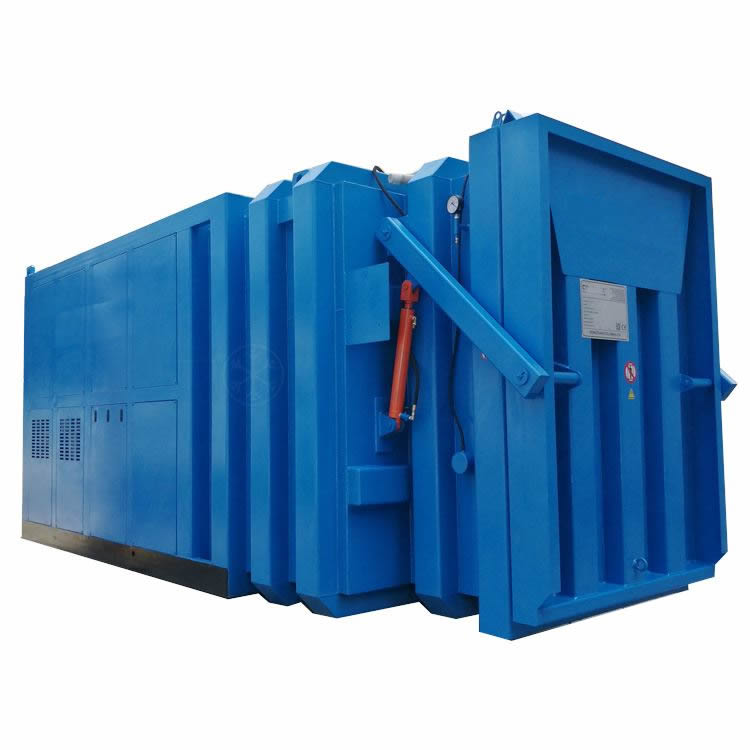3. Ice pre-cooling
Ice pre-cooling is to absorb the heat of fruits and vegetables through the melting of ice to cool the fruits and vegetables. It includes putting ice in the packing box or tray, or covering the tray with ice. This cooling method is actually often used in transportation. The ice cooling method is suitable for products that are not easily damaged by contact with ice or products that require immediate pre-cooling in the field. However, lowering the temperature and maintaining product quality has limited effects and can only be used as an auxiliary measure for other pre-cooling methods. Suitable for Brussels sprouts, broccoli, sweet corn, carrots, celery, spinach, spring onions, etc.

ZKGY believes that ice pre-cooling is not actually a real pre-cooling method, but an auxiliary cooling method during transportation. Ice pre-cooling is only suitable for very few types of fruits and vegetables.
4. Differential pressure pre-cooling
The pressure difference pre-cooling is to erect a partition on the side of the product stack close to the cooler, and a fan is installed under the partition. The rotation of the fan creates a pressure difference between the inside and outside of the partition. A cover is set on the product stack, one side of the cover is tightly connected with the partition board, so that cold air cannot pass from the top of the product stack, but flows through the gaps or holes of the package in the horizontal direction to take away the heat. The differential pressure fan is a multi-blade axial flow fan with a high pressure head. It adopts a suction air flow method, so the air flow in the library is uniform and there is no dead angle.
The advantage of differential pressure precooling is that its cost is not much higher than that of cold storage, but its efficiency is 4-6 times that of cold storage.

ZKGY believes that differential pressure pre-cooling is simply an enhanced version of cold storage cold air. This strong pressure difference and strong wind also caused certain damage to the surface of fruits and vegetables. In particular, the fragility of the leaf surface of leafy vegetables, and the shrinking sensation exhibited after the pressure difference pre-cooling seriously affects the quality of leafy vegetables. Moreover, the pressure difference pre-cooling takes away not only the moisture on the surface of the fruits and vegetables, but the strong pressure difference takes away the moisture in the fruits and vegetables through the pores, which makes the fruit or vegetable body easily dehydrated.

5. Vacuum pre-cooling
Vacuum pre-cooling is to place fruits and vegetables in a vacuum chamber and quickly extract air to a certain degree of vacuum. The heat is converted into hot air under vacuum and is pumped away, so as to achieve the purpose of rapid cooling. The evaporation of water is accelerated when the pressure is reduced. For example, when the pressure is reduced to 533.29Pa, water can boil at 0°C. From the simple point of view, the product temperature in the vacuum chamber will be reduced to 0 degrees after the heat of the product in the vacuum chamber is exhausted. The low temperature point of vacuum pre-cooling is also at 0 degrees, because it can only pump out the cooling capacity but not produce it.

The effect of vacuum cooling depends to a large extent on the surface of fruits and vegetables, the difficulty of tissue loss and the speed of vacuuming the vacuum chamber. Therefore, the effects of vacuum cooling of different types of fruits and vegetables vary greatly. Lettuce, spinach, lettuce and other leafy vegetables are suitable for vacuum cooling. Lettuce packaged in a carton is vacuum pre-cooled, which can drop from 35°C to 2°C in 25-30 minutes, and lettuce without a tight wrap takes only 15 minutes. Some vegetables such as asparagus, cauliflower, cabbage, celery, spring onions, mushrooms and sweet corn can also be cooled by vacuum. However, some products with a smaller surface area such as a variety of fruits, root vegetables, tomatoes and other fruits and vegetables are slow due to slow heat dissipation. Vacuum cooling is not suitable. The packaging of vacuum cold products cannot be completely sealed.
